牛津译林版英语必修3Unit 2 Language Project课件(共22张PPT)
文档属性
| 名称 | 牛津译林版英语必修3Unit 2 Language Project课件(共22张PPT) |  | |
| 格式 | zip | ||
| 文件大小 | 2.0MB | ||
| 资源类型 | 教案 | ||
| 版本资源 | 牛津译林版 | ||
| 科目 | 英语 | ||
| 更新时间 | 2020-03-24 20:30:12 | ||
图片预览


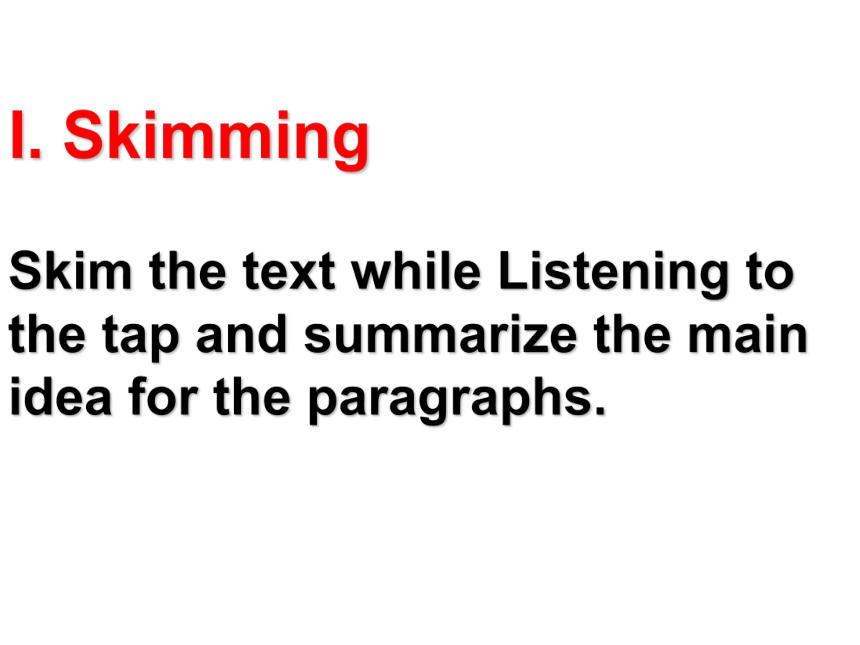

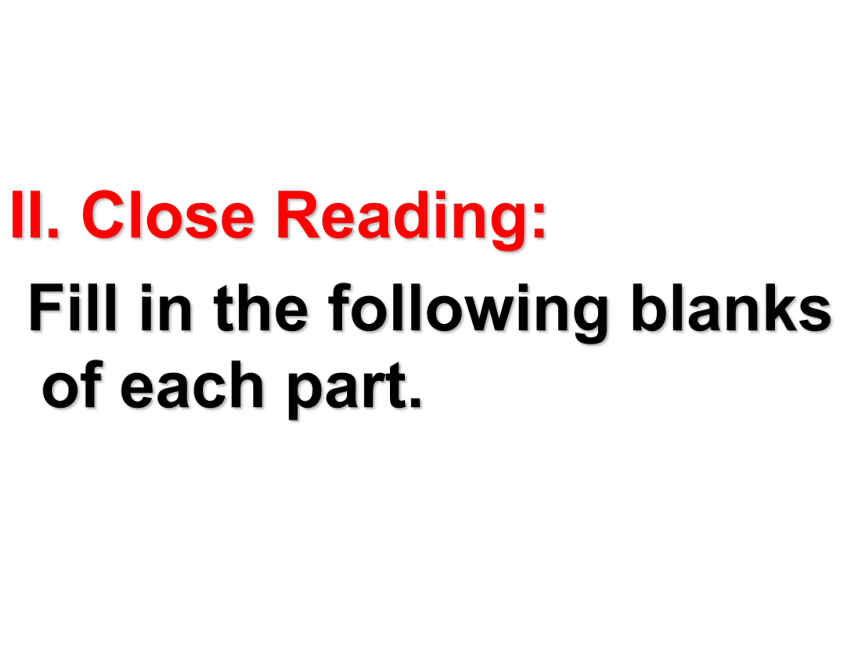
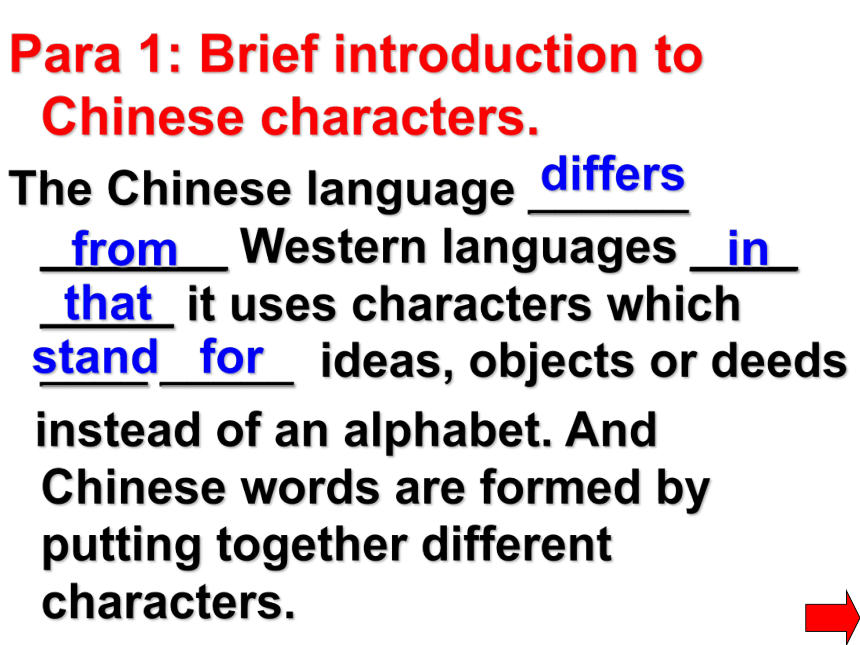

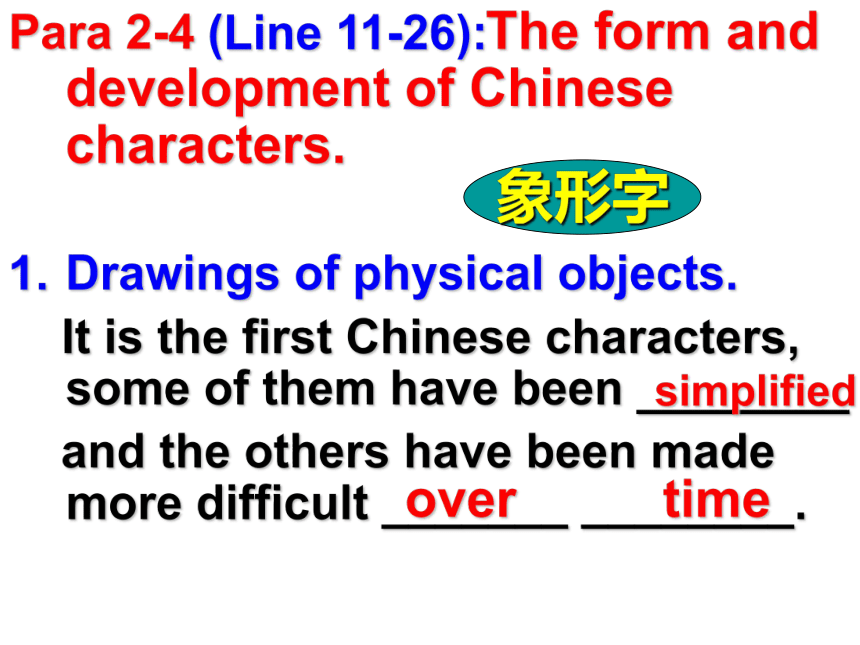
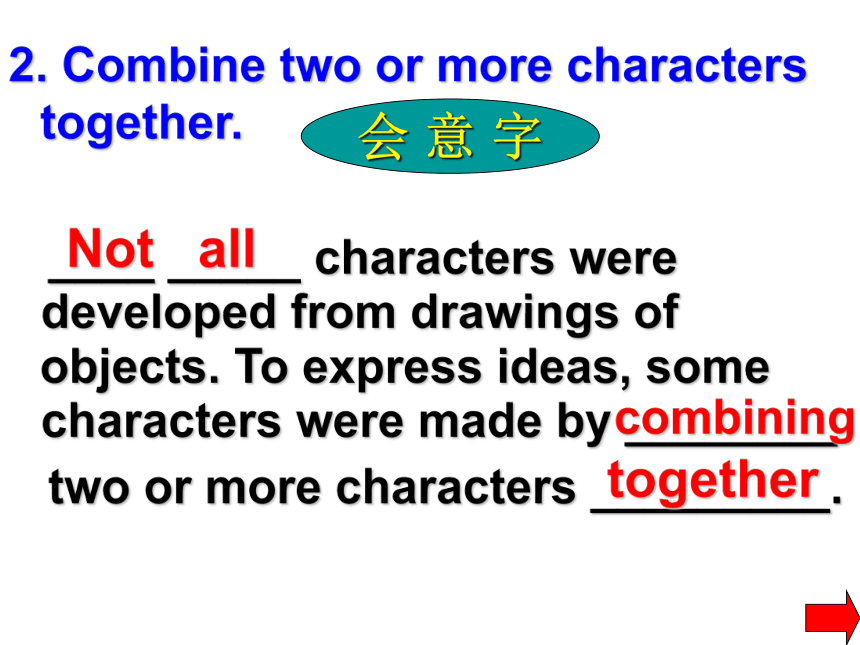
文档简介
(共22张PPT)
马
project
Skim the text while Listening to the tap and summarize the main idea for the paragraphs.
I. Skimming
A. Simplified Chinese characters.
B. Brief introduction to Chinese characters.
C. The origin, forms and development of Chinese characters.
Para.1 _______
Para.2-4 _______
Para.5 _________
Main idea of each part
B
C
A
II. Close Reading:
Fill in the following blanks of each part.
Para 1: Brief introduction to Chinese characters.
The Chinese language ______ _______ Western languages ____ _____ it uses characters which ____ _____ ideas, objects or deeds
instead of an alphabet. And Chinese words are formed by putting together different characters.
differs
from
in
that
stand for
Para 2: (Line 6-10)
The origin of Chinese characters. _________ _____an ancient story, a man _____ Cang Jie invented Chinese writing. While hunting, he saw the different tracks of animals, which made him have the idea _____ he could use different shapes to _______ different objects.
According to
named
represent
that
the idea
Para 2-4 (Line 11-26):The form and development of Chinese characters.
Drawings of physical objects.
It is the first Chinese characters, some of them have been ________
and the others have been made more difficult _______ ________.
simplified
over time
象形字
2. Combine two or more characters together.
____ _____ characters were developed from drawings of objects. To express ideas, some characters were made by ________
two or more characters _________.
会 意 字
Not all
combining
together
3. Characters developed for directions and numbers
It is easy to ___________ the meanings of this type of characters by looking at them. For example, the characters for ‘up’ and ‘down’, which are _________ ____ each other.
指 事 字
distinguish
opposites of
4. Combine one part of the character indicating the meaning and the other suggesting the pronunciation.
形 声 字
differ from
(1)Tom differs from his brother in many ways.
=Tom is different from his brother in many ways.
(2) 中国与美国在政治和文化方面有着不同之处。
China differs from the USA in politics and culture.
in that:
(1) I like the city, while I like the countryside better in that I have more friends there.
(2) I’ve been lucky in that I have never had to worry about money.
因为,由于
stand for :
This symbol stands for good fortune.
May I ask what policy your Party stands for?
Some people stand against the project.
代表,象征
主 张
反 对
昨天买的那支笔很好写。
坐在角落的那个女孩是我的好朋友。
3.合理的饮食和有规律的运动是保持健康的唯一方式
The pen bought yesterday writes well.
The only way to stay healthy is to eat right food and exercise regularly.
The girl sitting in the corner is my best friend.
比较:
(1) Not all the students went to the cinema.
None of the students went to the cinema.
(2) Both the trees were not planted by me.
Neither of the trees were planted by me.
not 与all, every, both连用
表部分否定,“并非都...”
combine
1. The two countries combined together against their enemy.
2. The two old schools are to combine to form one big new school.
3. 我们应该把理论和实践结合起来。
We should combine theory with practice.
联合 vi
合并 vi
把...与...结合起来 vt
Indicate: v indication (n)
(1) The black clouds indicate that it is going to rain.
(2) He took out a map and indicated the quickest route (路线) to us.
表 明
指 出
Summary
Characters developed for directions
and numbers
Types of characters introduced in the text:
drawings of physical objects
Characters made by combining two or
more elements together
目
休
上
Combine one part of the character indicating meaning and the other showing sound.
蜻
Useful phrases:
differ from
stand for
instead of
according to
over time
as a whole
turn into
与…不同
代表,主张
代替,而不是
根据
随着时间的推移
总的来说
变成
Goodbye, everybody !
Thank you
马
project
Skim the text while Listening to the tap and summarize the main idea for the paragraphs.
I. Skimming
A. Simplified Chinese characters.
B. Brief introduction to Chinese characters.
C. The origin, forms and development of Chinese characters.
Para.1 _______
Para.2-4 _______
Para.5 _________
Main idea of each part
B
C
A
II. Close Reading:
Fill in the following blanks of each part.
Para 1: Brief introduction to Chinese characters.
The Chinese language ______ _______ Western languages ____ _____ it uses characters which ____ _____ ideas, objects or deeds
instead of an alphabet. And Chinese words are formed by putting together different characters.
differs
from
in
that
stand for
Para 2: (Line 6-10)
The origin of Chinese characters. _________ _____an ancient story, a man _____ Cang Jie invented Chinese writing. While hunting, he saw the different tracks of animals, which made him have the idea _____ he could use different shapes to _______ different objects.
According to
named
represent
that
the idea
Para 2-4 (Line 11-26):The form and development of Chinese characters.
Drawings of physical objects.
It is the first Chinese characters, some of them have been ________
and the others have been made more difficult _______ ________.
simplified
over time
象形字
2. Combine two or more characters together.
____ _____ characters were developed from drawings of objects. To express ideas, some characters were made by ________
two or more characters _________.
会 意 字
Not all
combining
together
3. Characters developed for directions and numbers
It is easy to ___________ the meanings of this type of characters by looking at them. For example, the characters for ‘up’ and ‘down’, which are _________ ____ each other.
指 事 字
distinguish
opposites of
4. Combine one part of the character indicating the meaning and the other suggesting the pronunciation.
形 声 字
differ from
(1)Tom differs from his brother in many ways.
=Tom is different from his brother in many ways.
(2) 中国与美国在政治和文化方面有着不同之处。
China differs from the USA in politics and culture.
in that:
(1) I like the city, while I like the countryside better in that I have more friends there.
(2) I’ve been lucky in that I have never had to worry about money.
因为,由于
stand for :
This symbol stands for good fortune.
May I ask what policy your Party stands for?
Some people stand against the project.
代表,象征
主 张
反 对
昨天买的那支笔很好写。
坐在角落的那个女孩是我的好朋友。
3.合理的饮食和有规律的运动是保持健康的唯一方式
The pen bought yesterday writes well.
The only way to stay healthy is to eat right food and exercise regularly.
The girl sitting in the corner is my best friend.
比较:
(1) Not all the students went to the cinema.
None of the students went to the cinema.
(2) Both the trees were not planted by me.
Neither of the trees were planted by me.
not 与all, every, both连用
表部分否定,“并非都...”
combine
1. The two countries combined together against their enemy.
2. The two old schools are to combine to form one big new school.
3. 我们应该把理论和实践结合起来。
We should combine theory with practice.
联合 vi
合并 vi
把...与...结合起来 vt
Indicate: v indication (n)
(1) The black clouds indicate that it is going to rain.
(2) He took out a map and indicated the quickest route (路线) to us.
表 明
指 出
Summary
Characters developed for directions
and numbers
Types of characters introduced in the text:
drawings of physical objects
Characters made by combining two or
more elements together
目
休
上
Combine one part of the character indicating meaning and the other showing sound.
蜻
Useful phrases:
differ from
stand for
instead of
according to
over time
as a whole
turn into
与…不同
代表,主张
代替,而不是
根据
随着时间的推移
总的来说
变成
Goodbye, everybody !
Thank you
